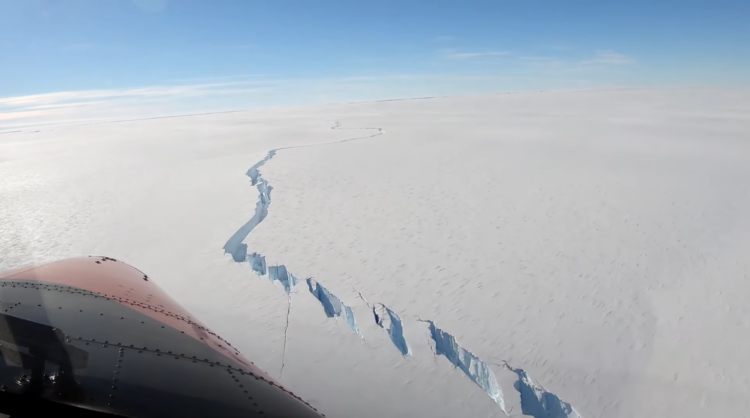An iceberg the size of New York City broke off the Brunt Ice Shelf in Antarctica close to a British scientific outpost. Luckily, no one was injured or in danger.
The research center was closed and none of the 12-person staff was there at the time. Researchers were also prepared for the iceberg to break off at some point. They recorded large cracks in the shelf for years.
The British Antarctic Survey (BAS) was tracking the Burnt Ice Shelf crack.

In November, a chasm formed in the shelf, which suggested the calving — the process of an iceberg breaking off — was imminent. The November chasm, named the North Rift, continued to push northeast until it connected to the Brunt-Stancomb Chasm.
At that point, the ice was released from the shelf.
It is not clear where the iceberg will go from here, but it is being closely monitored.

The BAS explained in a press release , “Over coming weeks or months, the iceberg may move away; or it could run aground and remain close to Brunt Ice Shelf. Halley Station is located inland of all the active chasms, on the part of the ice shelf that remains connected to the continent. Our network of GPS instruments will give us early warning if the calving of this iceberg causes changes in the ice around our station.”
Calving is unpredictable.

The Antarctic research station had already been moved further inland in 2017 due to the forming cracks. The research station may have to be moved again due to the changing characteristics of the ice shelf.
The BAS said, “This is a dynamic situation. Four years ago we moved Halley Research Station inland to ensure that it would not be carried away when an iceberg eventually formed. That was a wise decision. Our job now is to keep a close eye on the situation and assess any potential impact of the present calving on the remaining ice shelf. We continuously review our contingency plans to ensure the safety of our staff, protect our research station, and maintain the delivery of the science we undertake at Halley.”
It is unclear if more of the ice will break off.

Adrian Luckman, a professor at Swansea University, is continuing to track the ice shelf via satellite images.
“Time will tell whether this calving will trigger more pieces to break off in the coming days and weeks. At Swansea University we study the development of ice shelf rifts because, while some lead to large calving events, others do not, and the reasons for this may explain why large ice shelves exist at all,” he said in an interview with BBC News .
Does this point to climate change?

Experts do not think that the calving is linked to climate change. Calving is a natural process that allows an ice shelf to eject excess mass accumulated from snowfall. So far, Scientists have not found any signs that the ice shelf is breaking more than naturally expected.
In fact, the Brunt ice shelf was at its largest before the iceberg broke off. The calving was well overdue.

















































